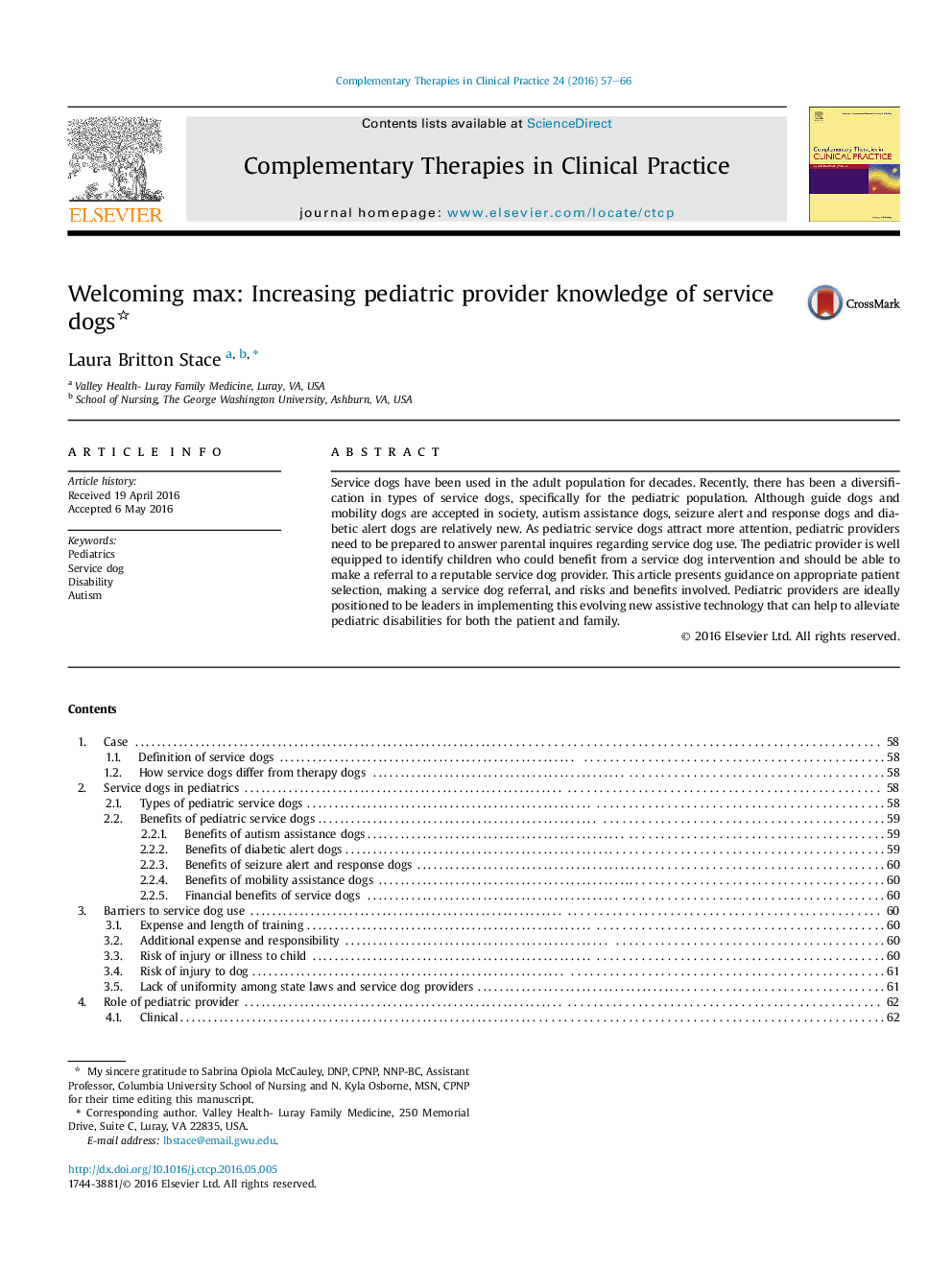| Article ID | Journal | Published Year | Pages | File Type |
|---|---|---|---|---|
| 2628324 | Complementary Therapies in Clinical Practice | 2016 | 10 Pages |
Service dogs have been used in the adult population for decades. Recently, there has been a diversification in types of service dogs, specifically for the pediatric population. Although guide dogs and mobility dogs are accepted in society, autism assistance dogs, seizure alert and response dogs and diabetic alert dogs are relatively new. As pediatric service dogs attract more attention, pediatric providers need to be prepared to answer parental inquires regarding service dog use. The pediatric provider is well equipped to identify children who could benefit from a service dog intervention and should be able to make a referral to a reputable service dog provider. This article presents guidance on appropriate patient selection, making a service dog referral, and risks and benefits involved. Pediatric providers are ideally positioned to be leaders in implementing this evolving new assistive technology that can help to alleviate pediatric disabilities for both the patient and family.
